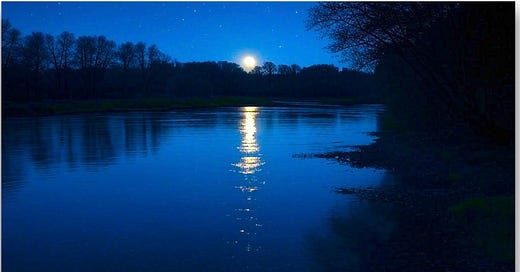Renewables Virtue Signaling Is Killing Germany, Once Thought the Green Energy Leader, But Backing Away Isn't Easy!
Doug Sheridan evaluates a Wall Street Journal Editorial Board article and finds it to be on the money, as do I:
The Editorial Board of the WSJ writes, Germany has invested so many hundreds of billions of euros in its green energy transition over the years that no one can tally the precise amount. Yet the share of wind and solar power in the country's energy mix in Q1 of this year managed to fall—by a lot. There's a lesson for the US here.
Renewable sources made up some 47% of electricity consumption in Europe's largest economy in Q1 2025. That's down from 56% in Q1 the first three months of 2024. The drop comes despite Germany's continuing build-out of renewable generation. The country has added 872 wind turbines with a capacity of 4.3 GW since April 2024, yet wind-power output fell 16%. Ouch.You can guess what went wrong. Feb and Mar were unusually wind-free, onshore and offshore. A lack of rain meant hydropower underperformed. March was sunnier than usual, which helped to boost solar-electricity output compared to a year earlier. But we're talking about Germany in March. Relatively short daylight hours in a northern latitude meant this boost wasn't enough to offset the decline in wind generation.
These climactic conditions happen regularly enough that the German language has a word for it— Dunkelflaute, or “dark stillness." It means renewables alone can't power an advanced industrial economy, as even Berlin is starting to notice.
The new coalition agreement that will form the basis for incoming Chancellor Friedrich Merz's agenda envisions building 20 GW of natural-gas-fired power generation by 2030 to provide stable base power. But Merz's left-right coalition commits to continuing a renewable build-out, too. Good luck with all that, since an overreliance on intermittent renewables tends to make it uneconomical to run natural-gas plants as a backup. Expect more subsidies in the future.
Germany is further down the road of renewable power than many other large economies. Its energy mess is enough to make everyone else realize it's not an example to follow.
Our Take: The Board has it right. Because renewables simply cannot deliver reliable power during certain parts of the year, Germany must build and maintain a shadow fleet of dispatchable thermal general generation. If it's fun to invest and pay twice or three times more than necessary for reliable power, Germans are poised to have a ball.
Renewables necessarily require duplicative power sources for the reasons cited and, therefore, increased electricity costs must increase, even if the renewables are free, which they are not, of course. They require massive subsidies, in fact. And, then there is this from our Australian friend Rafe Champion, published earlier this year:
In 2020 the term “wind droughts” began to appear in the literature of the Energy Realists of Australia and in the Integrated System Plan produced by the Australian Energy Market Operator.
We read more about wind droughts nowadays although if you ask a roomful of people about wind droughts you will mostly see quizzical expressions.
Wind droughts should have been investigated thoroughly in the 1990s when windmills began to be attached to the Australian grid but it seems that the average wind velocity was used as the standard measure of wind resources. That measure does not take account of the variability in the velocity and the fact that the grid demands continuous input to match demand from nanosecond to nanosecond. Periods with next to no wind up to 3 days in duration in Australia and weeks in duration in Europe can occur across continental areas.
Think about it. Would you buy a farm to grow crops and pastures without checking the rainfall records? The wind supply and especially the reliability of supply is to wind farming as rainfall is to growing pasture and crops. The Goyder Line was drawn on the map of South Australia to warn prospective farmers about the risk of droughts north of the line.
Similar lines drawn on the map of the world would have warned wind farmers away from Australia, North America, Europe, and possibly the rest of the world, and there would be no subsidised and mandated unreliable energy from windmills attached to the grid in those places.
That would have saved the trillions that have been spent around the world to build mountains of debt and obtain in return more expensive power and less secure supply with massive environmental damage, including the ruin of forests and farmland.
Not a great investment?
Germany took the lead and others including Britain, South Australia, Spain, and Denmark followed enthusiastically.
Now the evidence is in.
The windpower experiment has failed disastrously, most obviously in Germany and Britain where deindustrialising proceeds apace under the impact of rising power prices.
Wind droughts are the root of the problem but they escaped serious attention until the Europeans metaphorically tripped over the Dunkelflaute in 2021.
So, why do so many Western politicians fall for the trap and stay with it? Because true believers do not care a whit about the facts and grifters financially enable them to make noise no politician wants to hear. It’s as simple as that. Nothing changes until there is more noise from us than them. It’s really that simple, although courageous leaders who will ignore political correctness, speak out, and act to deprive the grifters of their lobbying ability with NGO reform, are also needed.
#Wind #Climate #ClimateChange #Germany #ElectricPrices #NaturalGas #Renewables #Deindustrialization #DougSheridan #Dunkelflaute






Great one curated by Mr. S.
The RE path is a road to economic insanity.